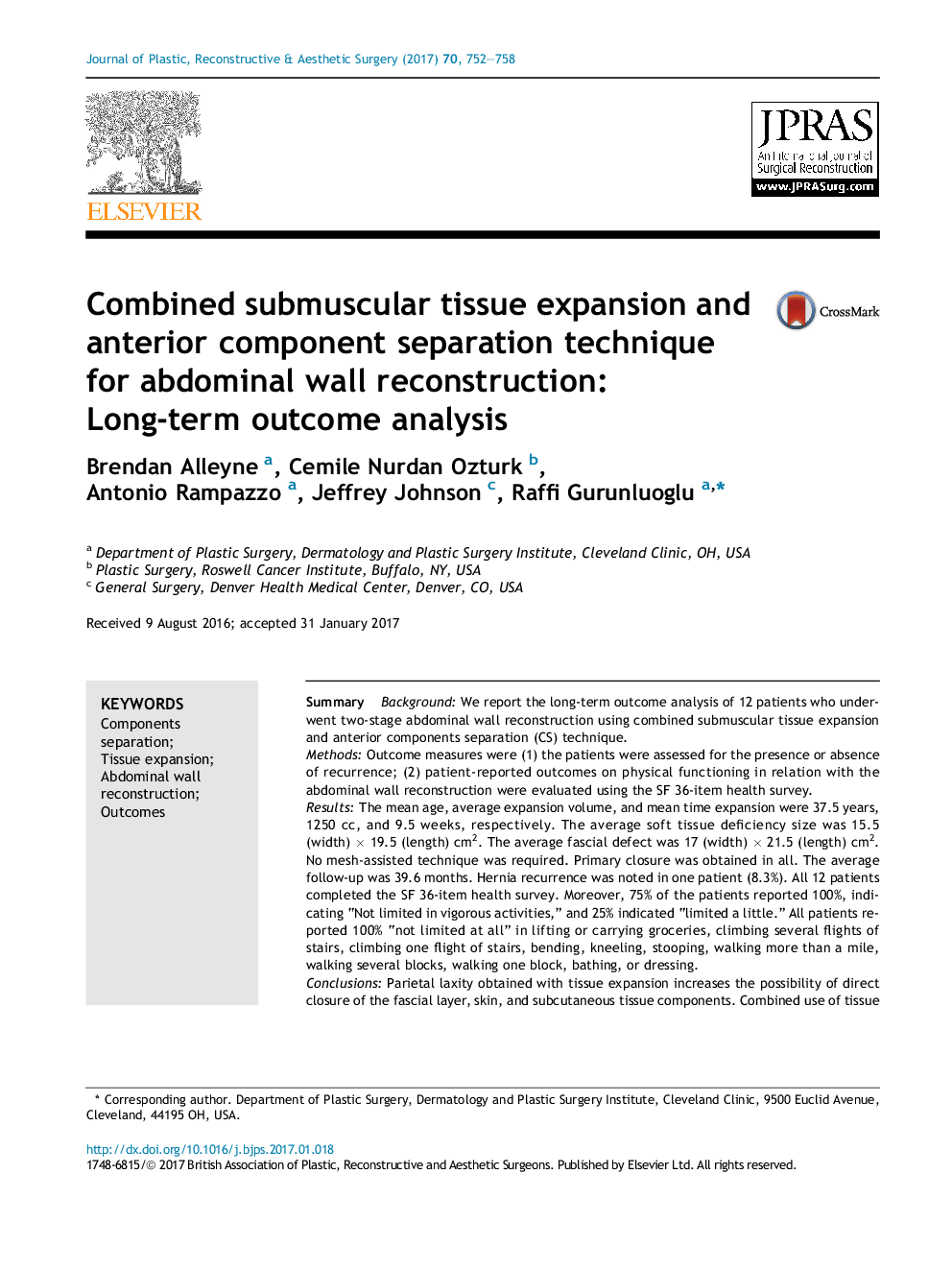| Article ID | Journal | Published Year | Pages | File Type |
|---|---|---|---|---|
| 5715345 | Journal of Plastic, Reconstructive & Aesthetic Surgery | 2017 | 7 Pages |
SummaryBackgroundWe report the long-term outcome analysis of 12 patients who underwent two-stage abdominal wall reconstruction using combined submuscular tissue expansion and anterior components separation (CS) technique.MethodsOutcome measures were (1) the patients were assessed for the presence or absence of recurrence; (2) patient-reported outcomes on physical functioning in relation with the abdominal wall reconstruction were evaluated using the SF 36-item health survey.ResultsThe mean age, average expansion volume, and mean time expansion were 37.5 years, 1250Â cc, and 9.5 weeks, respectively. The average soft tissue deficiency size was 15.5 (width)Â ÃÂ 19.5 (length)Â cm2. The average fascial defect was 17 (width)Â ÃÂ 21.5 (length)Â cm2. No mesh-assisted technique was required. Primary closure was obtained in all. The average follow-up was 39.6 months. Hernia recurrence was noted in one patient (8.3%). All 12 patients completed the SF 36-item health survey. Moreover, 75% of the patients reported 100%, indicating “Not limited in vigorous activities,” and 25% indicated “limited a little.” All patients reported 100% “not limited at all” in lifting or carrying groceries, climbing several flights of stairs, climbing one flight of stairs, bending, kneeling, stooping, walking more than a mile, walking several blocks, walking one block, bathing, or dressing.ConclusionsParietal laxity obtained with tissue expansion increases the possibility of direct closure of the fascial layer, skin, and subcutaneous tissue components. Combined use of tissue expansion and CS may result in favorable long-term outcomes as evidenced by patient-reported physical functioning data and low rate of hernia recurrence.
